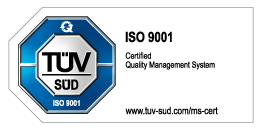Every steam locomotive design fulfills its purpose. The boiler, steam engine, traction unit and running gear must be matched to it. Highly optimized machines were not developed until the 1920s to 1950s.
The principle of a steam locomotive is simple. Steam is generated in a boiler via a firing system. It sets pistons and piston rods in the cylinder box in horizontal motion, which is translated into the rotary motion of the wheelset via the crosshead, driving rod and driving pin. The power applied to the rails is influenced, for example, by heating surface, boiler diameter and length, steam pressure, number of cylinders, piston diameter and stroke, number of driving wheelsets, and wheel diameter.
On the 05 001, the drive wheel diameter is a massive 2,300 millimeters. This is ideal for fast light trains. For starting with heavy trains, a high frictional mass is also required. It is crucial for the locomotive to be able to overcome driving resistance in the starting range at low speed. From a speed called "critical" in the train power curve, the locomotive's power then counts for further acceleration. While the triple-coupled express locomotives of the class (BR) 01 can only show their performance at 54 kilometers per hour, this already happens at 20.5 kilometers per hour with the passenger locomotives of the BR39.0-2 (Prussian P 10).
Three coupled axles for express locomotives
If a locomotive performs as expected, its design does not necessarily mean that it is suitable for general use. "For example, the BR10 locomotives designed for heavy express service on main lines, with an axle load of 22.4 tons, proved to be far too heavy for the superstructure on most of the network. Instead of using quadruple-coupled wheelsets to distribute the weight more evenly, as other railroad companies did, DB insisted on the principle of three coupled axles for express locomotives. This ignored the fact that main lines not only ran through flat country, but also through hilly areas such as the Eifel or the southern German regions," explains Dr. Andreas Räntzsch, a documentalist at Märklin. This meant that the BR39.0-2 four-coupled locomotives were still used in front of heavy, high-quality trains until 1967.
Redrawing plan with 99 trunk numbers
Over decades, engineers built up a wealth of experience in the knowledge of cause and effect, with which they designed locomotive types for a decided purpose and also met growing demands such as higher train masses and driving speeds. In 1923, the Deutsche Reichsbahn managed 210 different locomotive types and began to create order. The redesignation plan drawn up in the early 1920s provides for 99 steam locomotive master numbers, and the standardization office works with locomotive manufacturers to develop principles and a typification plan for locomotive construction. The locomotive standardization aimed at reducing the number of types, at a high number of components with identical drawings and exchange parts. The improved design principles also had an effect, as a comparison of two locomotives for the same purpose shows: While the Prussian P8 (BR38.10-40) still achieved an indexed output of 1,180 hpi, locomotives of the BR23 as a replacement class produced a proud 1,785 hpi.
Technical development
Technical development was steered by the central offices, with test offices scientifically testing the technical parameters of pre-series locomotives, for example, by means of test runs. This objectification led to the fact that even an entire series with an innovative character could fail in spite of good test results. "In the case of the BR50.40, for example, the Franco-Crosti boiler with flue gas preheater resulted in fuel savings of more than 20 percent compared to conventional 50s, but conversion, maintenance and repair proved too costly," railroad historian Andreas Räntzsch provides an example. "So it didn't matter that the oil-fired 50.40 with an axle load of 15.7 tons came close to matching the performance of a heavy BR44 freight locomotive with an axle load of 19.3 tons."
Optimizations by André Chapelon
A certain rigidity of the design principles blocked further developments, such as the utilization of the radiant heating surface and compound effect envisaged in France, i.e. the double utilization of steam expansion in separate cylinders. "In the 1920s, the Frenchman André Chapelon was the first to scientifically analyze the technical criteria responsible for the efficiency of steam locomotives. He came to new conclusions, such as that steam production by tons per hour could be increased more effectively by a larger radiant heating surface than by long heating pipes. The Reichsbahn, however, followed the boiler values of design engineer Richard Paul Wagner, who specified boilers with long tubes for higher efficiencies. When the smokebox of the BR01 from locomotive 01 077 onward was shortened by one meter and the heating tubes were lengthened from 5,800 millimeters to 6,800 millimeters, the large boiler overloaded the firebox. This was acknowledged with tube runs and stud breaks." Starting in 1950, the DB equipped several 01s with the high-performance boiler and, in the process, shifted the heating surface proportions entirely in the spirit of André Chapelon: Now, a large combustion chamber protruded into the long boiler.
Incidentally, in the mid-1940s, Chapelon experimentally converted an SNCF series 241 A four-coupler locomotive with the 2'D1' axle arrangement into a locomotive with a three-cylinder compound engine and the axle formula 2'D2'. The result was the 242A1 of the Société nationale des chemins de fer français - with an indexed output of 5,300 hp, the most powerful steam locomotive ever built in Europe.




